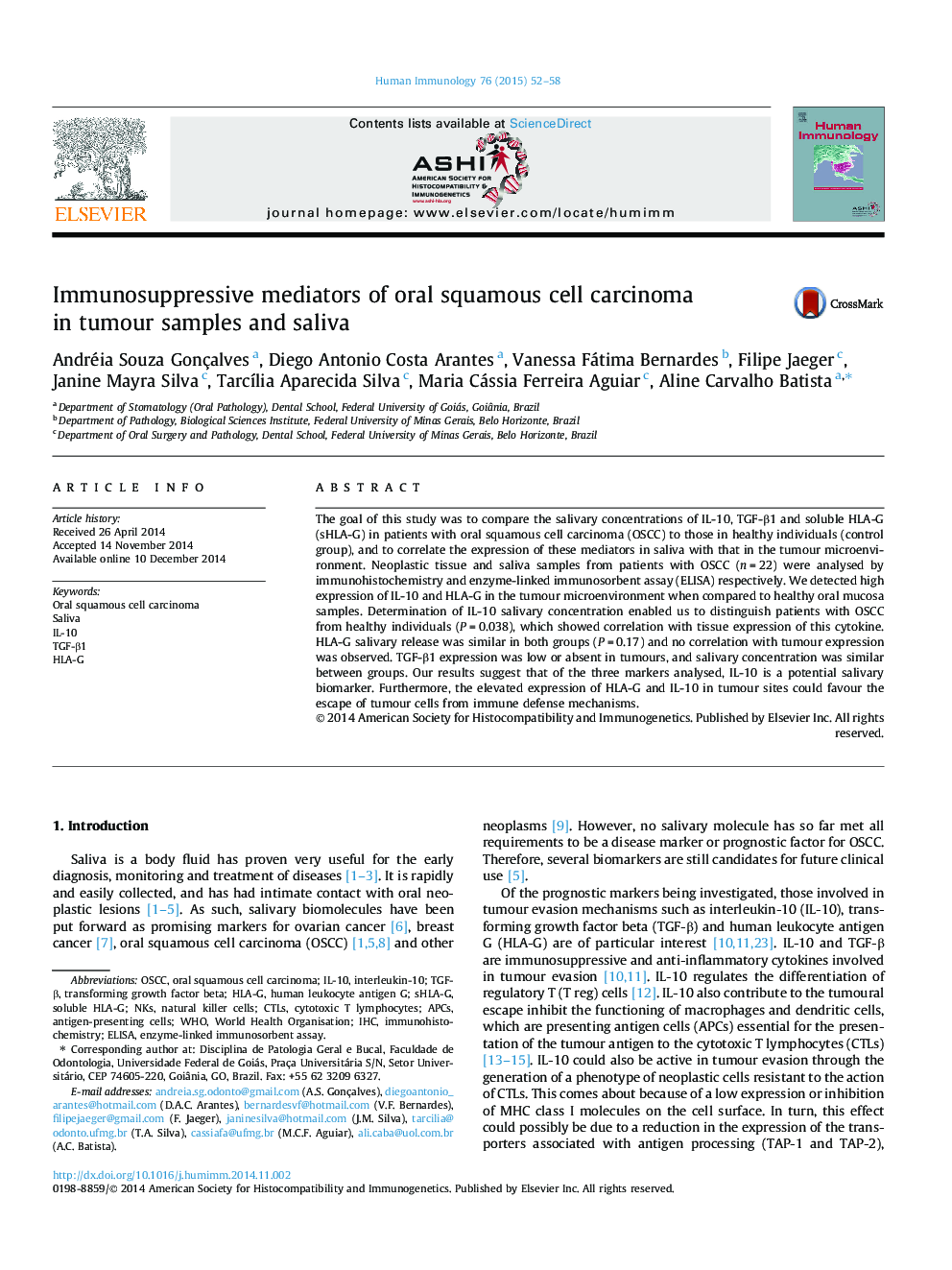| Article ID | Journal | Published Year | Pages | File Type |
|---|---|---|---|---|
| 3350383 | Human Immunology | 2015 | 7 Pages |
The goal of this study was to compare the salivary concentrations of IL-10, TGF-β1 and soluble HLA-G (sHLA-G) in patients with oral squamous cell carcinoma (OSCC) to those in healthy individuals (control group), and to correlate the expression of these mediators in saliva with that in the tumour microenvironment. Neoplastic tissue and saliva samples from patients with OSCC (n = 22) were analysed by immunohistochemistry and enzyme-linked immunosorbent assay (ELISA) respectively. We detected high expression of IL-10 and HLA-G in the tumour microenvironment when compared to healthy oral mucosa samples. Determination of IL-10 salivary concentration enabled us to distinguish patients with OSCC from healthy individuals (P = 0.038), which showed correlation with tissue expression of this cytokine. HLA-G salivary release was similar in both groups (P = 0.17) and no correlation with tumour expression was observed. TGF-β1 expression was low or absent in tumours, and salivary concentration was similar between groups. Our results suggest that of the three markers analysed, IL-10 is a potential salivary biomarker. Furthermore, the elevated expression of HLA-G and IL-10 in tumour sites could favour the escape of tumour cells from immune defense mechanisms.
